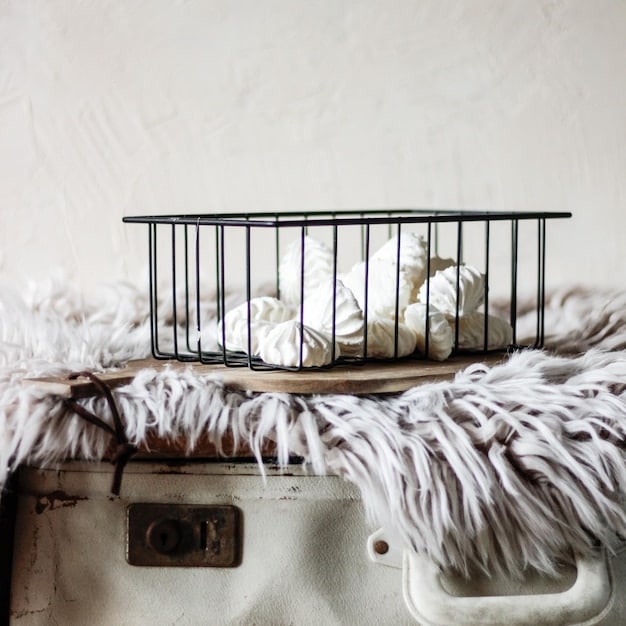Transitioning Your Baby to a Crib: A 2-Week Practical Guide

Transitioning your baby to a crib in under two weeks can be achieved by creating a comforting sleep environment, establishing a consistent bedtime routine, and gradually increasing crib time while providing ample support and reassurance.
Ready to move your little one from your arms to their own cozy crib? This practical guide: how to transition your baby to a crib in under 2 weeks offers a step-by-step approach to make this milestone smooth and stress-free for both you and your baby.
Understanding Your Baby’s Sleep Needs
Before embarking on the crib transition, it’s crucial to understand your baby’s sleep patterns and needs. Every baby is different, and what works for one may not work for another. Recognizing your baby’s sleep cues and understanding their temperament will significantly influence the success of the transition.
Additionally, consider your baby’s age and developmental stage. While some babies might be ready for the crib as early as four months, others may need more time and comfort before making the switch.
Recognizing Sleep Cues
Understanding when your baby is tired is essential for timing the crib transition. Look out for signs like rubbing their eyes, yawning, fussiness, or a glazed-over look. Responding to these cues promptly can make the transition smoother.
Considering Developmental Milestones
Be mindful of any developmental leaps your baby might be experiencing. Significant changes like rolling over, sitting up, or teething can affect their sleep patterns. It may be wise to postpone the transition until they are more settled.
- Establish a Consistent Bedtime: A predictable routine signals that it’s time to sleep.
- Swaddling or Sleep Sacks: Can provide a sense of security.
- White Noise: Helps to block out distracting sounds.
By understanding your baby’s specific needs, you will be able to transition knowing where your baby is.
Creating a Comfortable Crib Environment
A comfortable and safe crib environment is paramount for a successful transition. The crib should be a welcoming and secure space where your baby feels at ease. This involves selecting the right mattress, bedding, and ensuring the room’s temperature and lighting are conducive to sleep.
Pay attention to sensory details such as texture and sound. A soft, breathable mattress and gentle white noise can help create a comforting atmosphere that promotes relaxation and sleep.

Choosing the Right Mattress and Bedding
Opt for a firm mattress that meets safety standards. Use a fitted sheet made from breathable material like cotton. Avoid loose blankets, pillows, or bumpers, as they pose a suffocation risk.
Optimizing Room Temperature and Lighting
The ideal room temperature for a baby’s sleep is between 68 and 72 degrees Fahrenheit (20-22 degrees Celsius). Use blackout curtains to darken the room and minimize external light.
Creating a great environemnt for your baby is the first step. Don’t forget the details.
- Dim the Lights: Gradually reduce brightness as bedtime approaches.
- Regulate Room Temperature: Ensure the room is comfortably cool.
- Use a Humidifier: Can help if the air is dry, especially in winter.
Creating a comfortable environment for baby is an overlooked part of transitioning to the crib under two weeks. Remember the power of consistent environment ques.
Establishing a Soothing Bedtime Routine
A consistent bedtime routine is a powerful tool for signaling to your baby that it’s time to sleep. This routine should be calming and predictable, helping your baby relax and unwind before being placed in the crib.
The routine could include a warm bath, a gentle massage, reading a book, or singing a lullaby. The key is to repeat the same steps each night to create a sense of familiarity and security.
The Power of Consistency
Babies thrive on routine. A consistent bedtime routine helps regulate their internal clock and makes it easier for them to fall asleep.
Creating a Calming Atmosphere
Avoid stimulating activities like screen time or rough play before bed. Instead, focus on creating a calm and peaceful atmosphere with dimmed lights and soft music.

- Warm Bath: A relaxing way to signal bedtime.
- Gentle Massage: Helps soothe and relax muscles.
- Lullabies or Soft Music: Creates a peaceful atmosphere.
Having a good routine can set up for a easy transition for you and your baby. Try to ensure the routine is something that can be maintained over the long term.
Gradual Crib Acclimation Techniques
The transition to the crib doesn’t have to be abrupt. Gradual acclimation techniques can help your baby adjust to sleeping in the crib without feeling overwhelmed. This involves slowly increasing the amount of time your baby spends in the crib, starting with short periods during the day.
One common method is to start by placing your baby in the crib for a few minutes while they are awake and content. Gradually increase the duration as they become more comfortable. You can also try putting them down for naps in the crib before attempting nighttime sleep.
Naps in the Crib
Start by putting your baby down for one nap a day in the crib. Choose a time when they are typically drowsy but not overtired.
Increasing Crib Time Gradually
Slowly increase the amount of time your baby spends in the crib each day. Even if they don’t fall asleep, the exposure will help them become more familiar with the space.
Small moves are the foundation of large success. You can eventually get your baby comfortable in the crib so that they sleep without an issue at all.
- Start with Short Periods: A few minutes at a time, increasing gradually.
- Stay Nearby: Offer reassurance and comfort.
- Make it Positive: Use toys or activities they enjoy in the crib.
Gradual acclimation is a great method. Not everyone loves it, but it works more often than not.
Addressing Common Challenges and Setbacks
Even with the best preparation, you may encounter challenges during the crib transition. It’s essential to be patient and persistent, addressing each setback with empathy and understanding. Common issues include resistance to being placed in the crib, difficulty falling asleep, and nighttime awakenings.
When faced with these challenges, try to identify the underlying cause. Are they too hot or too cold? Are they hungry or uncomfortable? Addressing these issues can help alleviate their distress and promote better sleep.
Dealing with Resistance
If your baby resists being placed in the crib, try comforting them with gentle rocking or soothing words. You can also try placing a familiar-smelling item, like a worn t-shirt, in the crib to provide a sense of security.
Managing Nighttime Awakenings
Nighttime awakenings are common during the transition. Avoid immediately picking up your baby. Instead, try soothing them with gentle pats or shushing sounds from outside the crib.
You will likely encounter setbacks. Be kind to yourself and your baby. It is all part of the process.
- Stay Calm and Patient: Your baby senses your stress.
- Offer Comfort: But avoid creating new sleep crutches.
- Review the Routine: Ensure it’s still effective and comforting.
Remember that setbacks are a normal thing. If you don’t get it right the first time or even the second, don’t give up.
Maintaining Consistency and Patience
Consistency and patience are key to successfully transitioning your baby to a crib. It’s crucial to stick to the established bedtime routine and gradual acclimation techniques, even when faced with challenges. Remember that it may take time for your baby to adjust, and there will be ups and downs along the way.
Celebrate small victories and avoid getting discouraged by setbacks. Each small step is a move in the right direction in transitioning your baby to a crib in under two weeks.
The most important thing to remember is to stick with it until the end. Consistent action will achieve big results.
- Stay Consistent: Follow the routine every night.
- Be Patient: It takes time for babies to adjust.
- Celebrate Progress: Acknowledge and celebrate small victories.
Be aware that this is not a one time action. Once the transition begins, do not go back to the old routines.
| Key Point | Brief Description |
|---|---|
| 😴 Consistent Bedtime | Helps regulate baby’s internal clock for easier sleep. |
| 🧸 Comfortable Crib | Ensure a safe, cozy environment with appropriate bedding. |
| ⏳ Gradual Acclimation | Slowly increase the baby’s time in the crib. |
| 🫂 Patience | Be empathetic and supportive. |
Frequently Asked Questions
▼
Most babies are ready for a crib between 4-6 months old. Ensure your baby can roll over and has good head control before making the switch.
▼
Avoid immediately picking up your baby. Try soothing them with gentle pats or shushing sounds first. If they remain upset, offer comfort, but avoid creating new sleep habits.
▼
Try comforting them with gentle rocking or soothing words. You can also place a familiar-smelling item in the crib to provide a sense of security and comfort.
▼
A bedtime routine is extremely vital as it signals to your baby that it’s time for sleep. Consistency creates a strong association with sleep, making the transition smoother.
▼
Every baby is different, and some may need more time. Be patient, adjust the techniques, and consult with your pediatrician for personalized advice if needed on your baby’s sleep habits.
Conclusion
Transitioning your baby to a crib in under two weeks can be a smooth process with the right approach. By understanding your baby’s sleep needs, creating a comfortable sleep environment, establishing a soothing bedtime routine, and gradually acclimating them to the crib, you can achieve this milestone while providing the love and support your little one needs.





